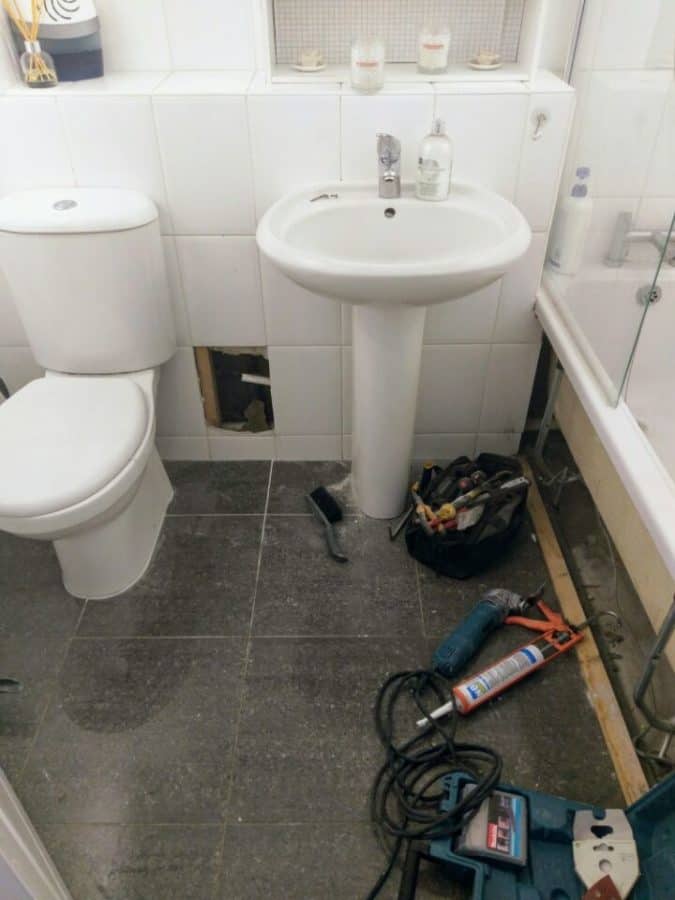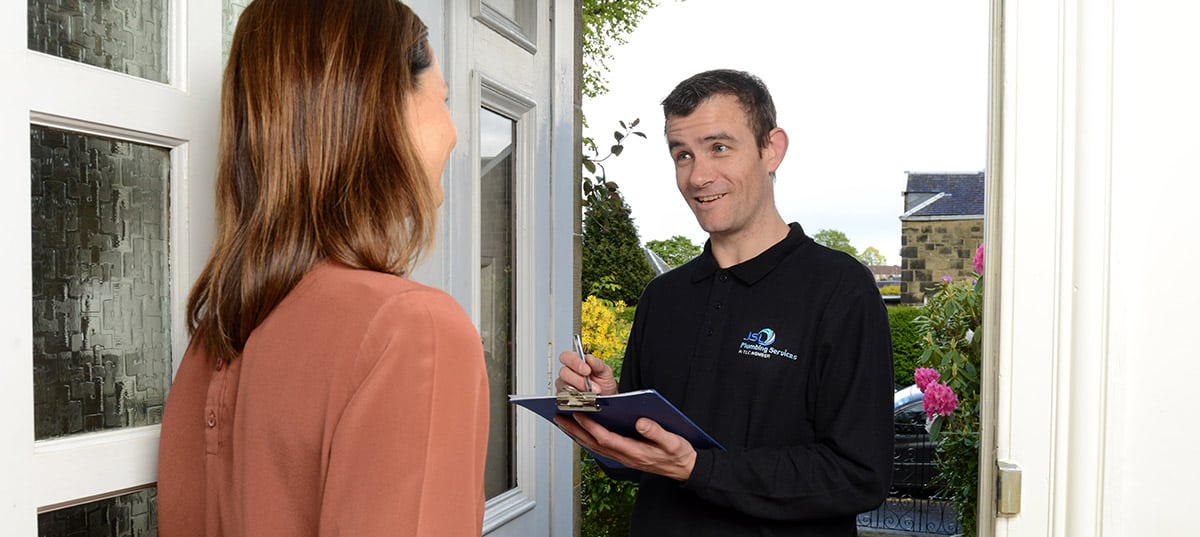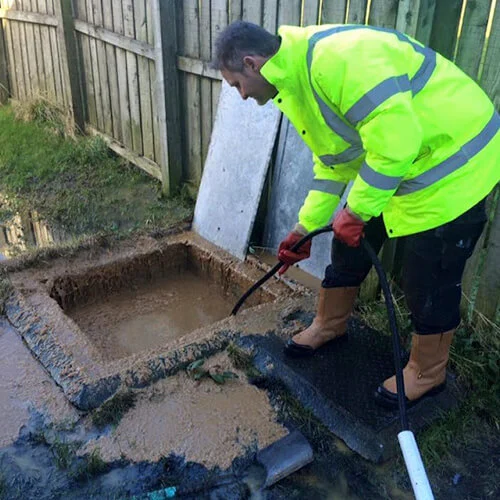A slow-draining toilet can quickly ruin a busy morning, especially when you’re in a hurry. You rush to get ready for work, but instead of smoothly continuing with your routine, you’re stuck waiting for the water to drain. This small issue easily disrupts your flow, and on a hectic Monday, it’s enough to throw your entire schedule off balance.
Since every minute counts, even a minor delay like this adds unnecessary stress. Because the toilet is often your first stop in the morning, and after a relaxing weekend, the last thing you need is a drainage issue to make the Monday blues even worse.
So, if you’re asking yourself, “Why does my toilet drain slowly?” and wondering, “How to fix a slow-draining toilet?”, look no further, you’re in the right place. In this blog, we’ll uncover the reasons behind a sluggish toilet and provide effective solutions that will make your mornings flow effortlessly!
Identifying a slow-draining toilet isn’t a complex puzzle, it’s quite straightforward and simple. To spot a slow-draining toilet, typically, you’ll notice that the toilet water drains more slowly than usual or fails to empty completely after a flush. Additionally, the toilet water may rise and then slowly drain away.
However, that’s not the end of the story. If your toilet not only drains slowly but also starts to gurgle as if a hungry monster is hiding beneath it, this could signal a more serious problem. The gurgling often indicates a blockage or an issue with the venting system, which, if left unaddressed, could lead to more significant drainage complications.

Several issues could be causing your toilet to drain slowly. Here’s a breakdown of common reasons:
The vent pipe plays a crucial role in proper drainage by allowing air into the plumbing system, which prevents vacuum formation and ensures smooth water flow. When debris, leaves, or even bird nests block this pipe, it disrupts airflow, leading to slow drainage. You may also notice gurgling noises and unpleasant sewer smells.
Blockages between the tank and the bowl can severely affect flushing efficiency. Mineral deposits, debris, or a faulty flush valve seal can obstruct water flow, causing slow drainage.
Did you know?: Hard water can lead to mineral build-up that obstructs the flush mechanism and impairs flushing efficiency.
The flush mechanism, which includes components like the handle, chain, and flapper, is crucial for transferring water from the tank to the bowl. If any part is damaged or misaligned, the flush may be weak or incomplete, leading to slow drainage. For example, a worn flapper might not seal properly, resulting in a weak flush.
A clog in the drain line can significantly slow down toilet drainage. Excessive toilet paper, sanitary products, or foreign objects often cause these blockages, restricting water flow and leading to slow drainage.
The water level in the toilet tank is critical for a strong flush. If the water level is too low, it won’t provide enough force to flush effectively, resulting in slow drainage. Adjusting the float valve can help maintain the correct water level.
Blocked waste pipes can restrict the flow of water from the toilet to the main sewer line. Over time, waste material and debris can accumulate, causing partial blockages that slow drainage. These blockages may result from grease build-up or foreign objects.
Mineral deposits from hard water can accumulate in the toilet’s internal components, such as the rim holes and flush valve. This build-up can restrict water flow and lead to slow drainage. Did you know?: Regular cleaning with a descaling agent or vinegar can help remove mineral deposits.
The flapper and flush valve control the flow of water from the tank to the bowl. A defective flapper may not create a proper seal, leading to weak or incomplete flushing. Similarly, a malfunctioning flush valve can disrupt water flow and cause slow drainage.

If you’re wondering whether a slow-draining toilet will fix itself, the answer is usually no. Most problems causing slow drainage tend to persist or even worsen if you leave a toilet clogged for too long. Now you might be asking, ‘How do I fix a slow-draining toilet?’ Fortunately, various effective methods can help resolve the issue.
Start by checking the water level in the toilet tank. If the water level is too low, it won’t generate a strong enough flush to clear the bowl effectively.
Adjust the float valve to the correct level, which is typically marked inside the tank. This adjustment ensures that the tank fills to the proper height, providing a stronger flush and improving drainage. A correctly set water level is essential for optimal flushing performance.
To address clogs in the toilet drain, begin with a plunger. Position the plunger over the drain and push down firmly, creating pressure that can help dislodge the blockage. If plunging doesn’t resolve the issue, use a pipe snake to tackle deeper clogs.
Insert the snake into the toilet drain and carefully feed it through the pipes while rotating the handle. The snake’s rotating action helps break up and dislodge stubborn clogs that a plunger might not reach. Once you feel resistance, continue to rotate the snake to break up the blockage. Pull out the snake and flush the toilet to ensure the clog is cleared.
A malfunctioning fill valve can affect the water level in the tank, leading to inefficient flushing. If you suspect the fill valve is broken, replace it to restore proper water levels. Turn off the water supply, drain the tank, and remove the old fill valve.
Install a new valve according to the manufacturer’s instructions, and then turn the water supply back on. This replacement ensures that the tank fills correctly, providing adequate water for effective flushing.
Over time, hard water can cause mineral deposits to accumulate in the toilet. These deposits can obstruct water flow and slow down drainage. To remove mineral build-up, use a descaling agent or white vinegar.
Pour the solution into the toilet bowl and let it sit for several hours to break down the deposits. Afterward, scrub the interior of the bowl and flush to clear away the loosened minerals. Regular maintenance helps prevent future build-up and keeps the toilet functioning efficiently.
Dish soap can be an effective, gentle method for clearing minor clogs. Pour a generous amount of dish soap into the toilet bowl and let it sit for 15 to 30 minutes. The soap helps to lubricate the pipes and break down any blockages. After the waiting period, flush the toilet to see if the blockage has cleared. This method is especially useful for softening clogs caused by organic materials.
As a last resort, use chemical drain cleaners to tackle persistent clogs. Follow the manufacturer’s instructions carefully when using these products, as they contain strong chemicals that can be harmful if misused. Pour the cleaner into the bowl and let it work for the recommended time before flushing.
Did you know?: Chemical drain cleaners can effectively dissolve stubborn clogs but may damage pipes if used excessively or incorrectly. Always handle these products with care and consider professional help if problems persist.

Sometimes, despite your best efforts with various DIY solutions, a slow-draining toilet may continue to be a problem. If you’ve tried multiple approaches to resolve the issue without success, it’s time to consider calling a professional. Persistent issues often signal more serious underlying problems, such as extensive blockages, damaged pipes, or main sewer line complications.
Moreover, if you notice frequent backups, gurgling sounds, or if the problem worsens over time, a professional can provide a comprehensive inspection and effective solution. They possess the tools and expertise necessary to address complex issues that exceed typical DIY methods.
If all this gets you wondering about how much it would cost to fix a slow-draining toilet, keep in mind that prices can vary based on the severity of the problem and the repairs needed. On average, professional services might range from £75 to £150 per hour to unblock a slow draining toilet in the UK.
Additional costs for parts and materials may also apply. Taking early action by consulting a professional can prevent more severe plumbing issues and help avoid higher repair costs down the line.
A slow-draining toilet can be a frustrating disruption to your day, but addressing it with the right methods can often bring quick relief. By identifying common issues and applying the DIY solutions we’ve discussed, you can often resolve the problem yourself.
However, if your toilet continues to drain slowly or you encounter persistent issues, professional assistance may be required. For expert help and dependable solutions, don’t hesitate to reach out. Contact us today or simply call us at 0141 406 1658 to get your toilet functioning smoothly again.
G1, G2, G4 City Centre | G3 Finnieston, Kelvingrove, Woodlands, Park Circus | G5 Gorbals, New Gorbals | G11 Broomhill, Thornwood, Partick | G12 Hyndland, Hillhead, Kelvinside, Kelvindale | G13 Knightswood, Anniesland | G14 Jordanhill, Yoker, Scotstoun | G15 Drumchapel | G20 Firhill, Kelvinside, Maryhill | G31 East End, Dennistoun, Alexandra Park | G32 Tollcross, Mount Vernon | G33 Stepps | G40 East End, Bridgeton | G41 Pollockshields | G42 Govanhill, Queens Park | G43 Shawlands | G44 Cathcart, Croftfoot | G45 Castlemilk | G46 Giffnock | G51 Govan | G52 Hillington | G53 Silverburn, Darnley | G60 Bowling, Old Kilpatrick | G61 Bearsden | G62 Milngavie | G63 Balfron, Strathblane, Kilearn, Blanefield | G64 Bishopbriggs, Torrance, Balmore | G65 Kilsyth | G66 Kirkintilloch, Lenzie, Milton of Campsie, Lennoxtown | G67, G68 Cumbernauld | G69 Moodiesburn, Baillieston | G71 Uddingston, Bothwell | G72 Blantyre, Cambuslang | G73 Rutherglen | G74, G75 East Kilbride | G76 Clarkston | G77 Newton Mearns | G78 Barrhead, Neilston | G81 Clydebank | G82 Dunbarton | G83 Balloch, Alexandria | G84 Helensburgh | ML1 Motherwell | ML2 Wishaw, Newmains | ML3 Hamilton, Ferniegair, Quarter, South Lanarkshire, Limekilnburn | ML4 Bellshill | ML5 Coatbridge | ML6 Airdrie | ML8 Carluke | ML9 Larkhall | PA1, PA2, PA3 Paisley | PA4 Renfrew | PA5 Johnstone | PA7 Bishopton | PA8 Erskine | PA11 Bridge of Weir | PA13 Kilmacolm | PA14 Langbank |

A reliable, professional and trusted drainage firm covering Glasgow and the surrounding areas. For quotations, emergency call outs and commercial contracts please call our head office on 0141 406 1658.
For all plumbing services in and around Glasgow, visit www.jsl-plumbing.com
For all heating services in and around Glasgow, visit www.jsl-heating.com